7 Essential Resources for Researching Your Family History
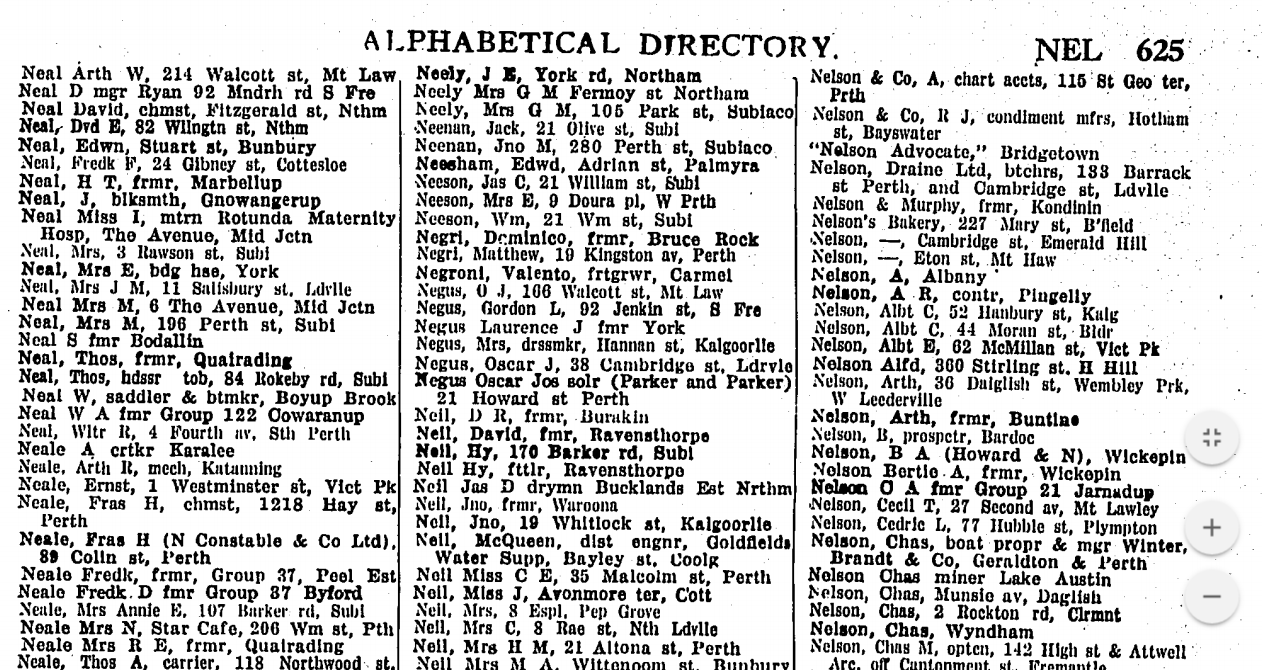
Have you ever tried to find out about someone, perhaps an elusive ancestor, but found little trace of them in the history books or other official records? It’s often the case when researching family history, and it was certainly my experience when writing Many Hearts, One Voice.
When I started researching the story of the War Widows’ Guild, I could count on one hand – quite literally – the number of books about Australian war widows, and only one had a single chapter about those in Western Australia. I was fortunate to have access to the Guild archives, which included original minutes, back copies of the organisation’s magazine, photographs and some correspondence. Even here, though, many of the women were recorded as Mrs Anketell or Mrs Learmonth, as was the custom of that time period.
I discovered, however, that many of the online resources my mother and I had used to discover our ancestors were equally useful when it came to the war widows, who had, until now, been relegated to the margins of history.
1. National Archives of Australia (NAA)
For me, the National Archives of Australia (NAA) was particularly useful for locating war records. Now, this might seem a bit odd since I wanted to focus on the women’s stories, but sometimes tracking down the husband was the only way to uncover a clue about the one left behind on the home-front. If I was lucky, the war widow I was searching for was listed as next-of-kin.
All records from the First World War have been digitally archived and are easily accessible online. Those from the Second World War and more recent conflicts aren’t generally available in this format, but can be purchased through the NAA website. You will receive a hard copy of the service record, which will then be digitised for others to see.
Many other records are also available. Some, such as photographs of individuals and battalions, can be viewed online. I discovered several photos of the War Widows’ Guild national founder, Jessie Vasey, and her husband, Major General George Alan Vasey. Some of Prime Minister Chifley’s correspondence has also been digitised , including letters from Guild representatives. Other times, I located files via the online catalogue but needed to visit a bricks and mortar branch to view the material, such as the file about the Western Australian Guild acquiring land in Mount Lawley to build affordable housing for war widows.
2. Australian War Memorial (AWM)
In a similar way, the Australian War Memorial (AWM) database is more geared towards the men who served; however, records of those killed in action usually include the next-of-kin and address, as well the parents’ names and any other military connections.
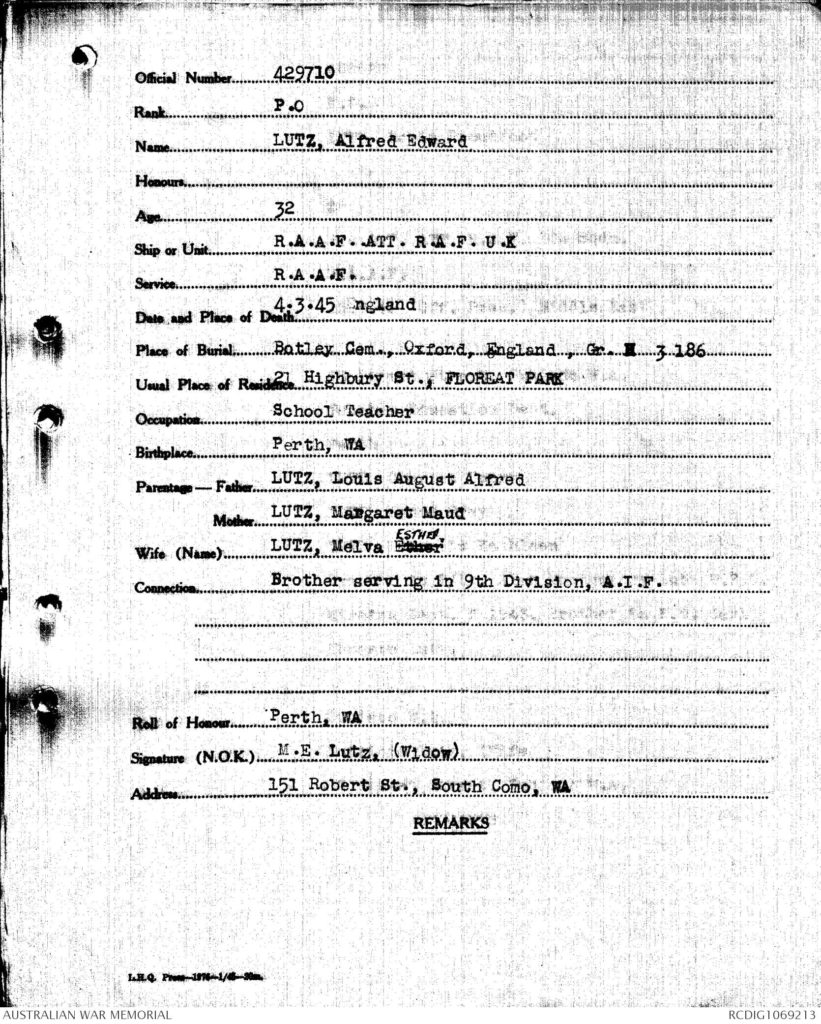
3. Reverse Marriages WA
Reverse Marriages WA enables you to search a person’s name and find out their spouse’s name as well as the district and year in which they were married. I originally discovered this resource while exploring my family history, but it also offered clues about individual war widows, and was sometimes the precursor to looking up a husband’s war record. In some cases, it also helped me track down who she remarried at a later date.

4. Post Office Directories
The Post Office Directories are available via the State Library of Western Australia website and contains entries between the years 1893 and 1949. Information is listed alphabetically by both surname and street name, and includes address and occupations of people living in Western Australia (both Perth and country districts). The directories do contain some inaccuracies so it’s a good idea to cross-reference with other information you find (something that’s a good idea regardless of a source’s apparent reliability anyway), but it still offers valuable clues.
For example, one of the war widows I interviewed spoke about growing up in Oxford Street, Leederville where her father owned several businesses during and after the Second World War. I was able to work out exactly where they were, and then visit those buildings (most of which have sadly been demolished to make way for office blocks). In my own family, Mum and I tracked the location of my great-grandfather after he disappeared from the Goldfields, as well as the address of my great-grandmother’s dressmaking business in Kalgoorlie.
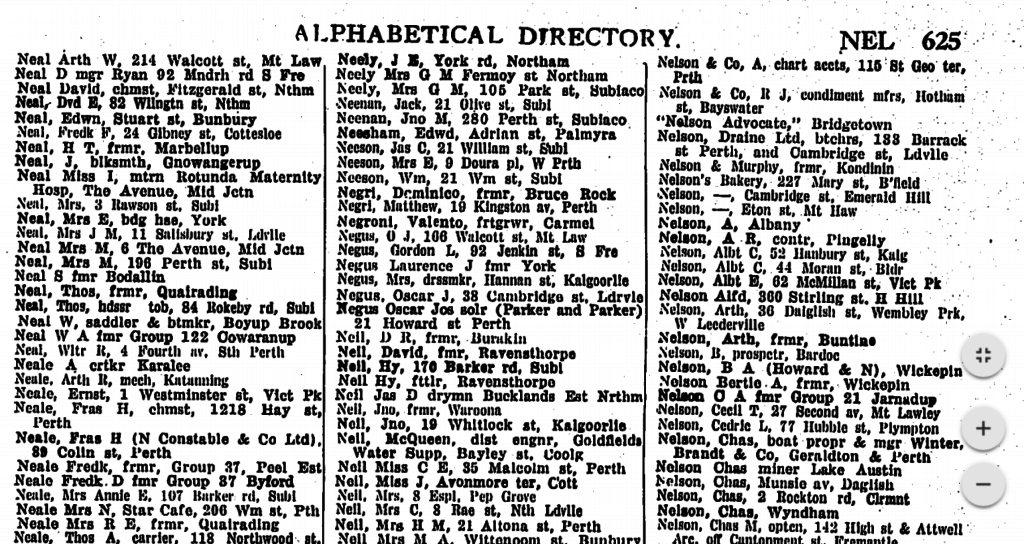
Although I’m yet to use them, I believe that similar directories exist for Victoria, South Australia, New South Wales and Queensland.
5. Metropolitan Cemeteries Board (MCB)
The online database of the Metropolitan Cemeteries Board (MCB) includes a number of Perth cemeteries: Fremantle, Guildford, Karrakatta, Midland, Pinaroo and Rockingham. Not only does it provide information about where a person is buried or cremated, it lets you know the date of death, the grantee and suburb in which they lived.
6. State Library of Western Australia (SLWA) catalogue
I found all sorts of useful information in the SLWA online catalogue. Sometimes this necessitated a trip into the library to check out something in person, such as oral histories, film footage, manuscripts and other ephemeral material. But many archived photographs are available to view online.
I found photos of the Esplanade Kiosk, which the War Widows’ Guild managed as a business venture from 1949 to 1963, as well as sport, Anzac services and other activities conducted on The Esplande (which has now made way for Elizabeth Quay). My mother discovered photos of my grandmother and great-grandmother in the collection of a Goldfields photographer.
Photographs of buildings and other places also provide a useful way to describe the time period or setting of a particular event. I discovered that in 1952, members of the War Widows’ Guild participated in National Flower Day, a major fundraiser for Silver Chain. Guild minutes offer few details, but I found numerous photographs of the day in the library catalogue, which I used to add description to my narrative.
7. Trove
I couldn’t write about online resources without mentioning Trove, which transformed the way I researched the War Widows’ Guild, and uncovered some fabulous stories about my ancestors.
Trove is, as its name suggests, a treasure trove of information and includes (but is more than) a digital archive of many of Australian newspapers.
Trove didn’t exist in 2008 when I began researching the story of the War Widows’ Guild. Instead, I needed to know when an event occurred and spend time in the State Library, scrolling through the relevant microfilm. While that can be fun, and can uncover other contextual information, it is time consuming.
Once Trove was launched in 2009 by the National Library of Australia, I could simply head to the online portal and type ‘war widows’ or ‘War Widows’ Guild’ or an individual’s name into the search bar. Within minutes, a search for ‘war widows’ between 1945 to 1950 returned more than 300 articles, notices and advertisements, and that’s just for the Argus newspaper in Victoria. For a group of women who were largely absent from the history books, they certainly made sure they were heard in that post-war period.
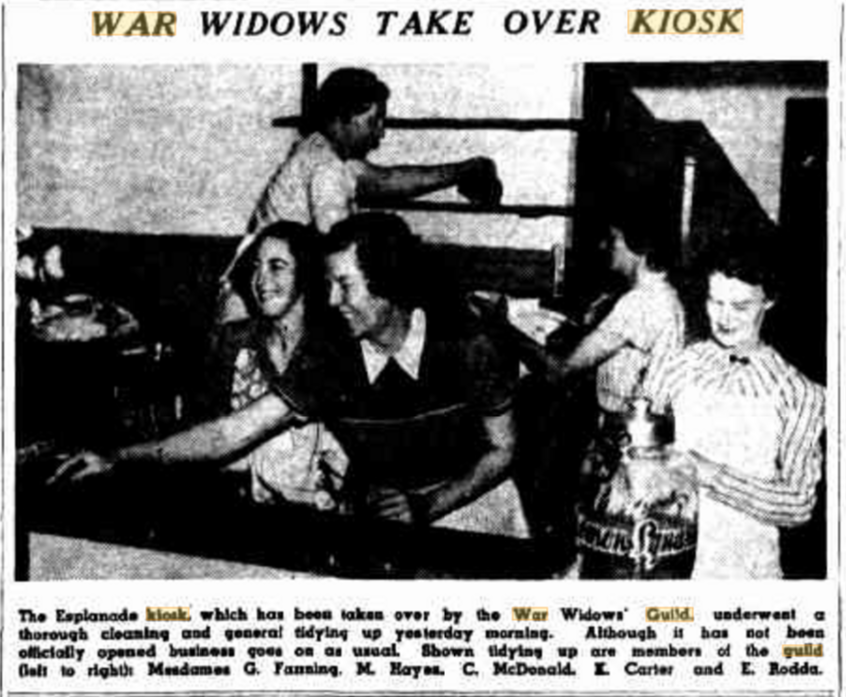
Without Trove, many of these articles, and the information they contain, would have remained elusive. So, whether for family history or wider historical research, this is an invaluable resource, one which is under threat due to funding cuts.
Over to You
Of course, these seven resources are just a beginning and in no way an exhaustive list: what others can you recommend?

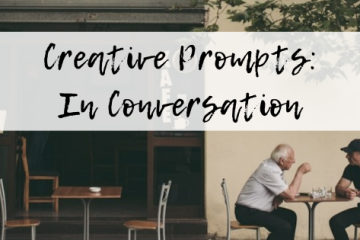
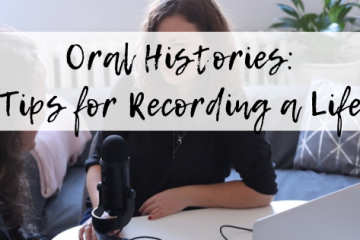
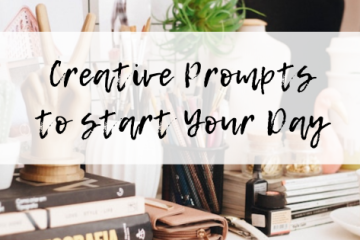
Great article. Thanks for sharing your knowledge! I’ve used Trove before – my 98 year old grandmother had a photo of herself as a young lady at a dance, and we found a local newspaper article on Trove where it described what she was wearing that night. Amazing information! (http://trove.nla.gov.au/newspaper/article/148439284?searchTerm=electric%20light%20waroona%20hepple&searchLimits=)
Thanks for commenting, Bronwyn. It is such a gift to find articles like that, and without Trove these would most likely be lost to us. Such a shame that our government doesn’t value it as much as we do.